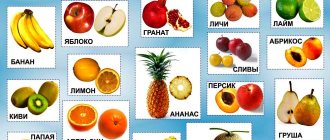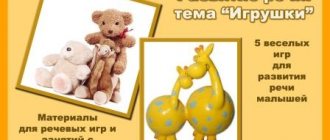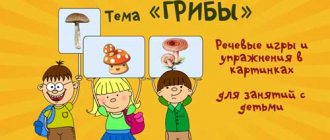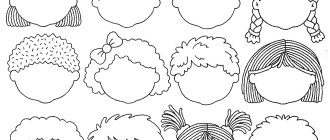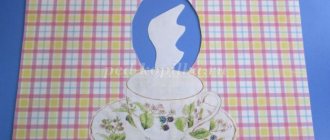- home
- Speech development
The level of development of speech and cognitive abilities of preschoolers aged 4-5 years is already quite high: children actively communicate, have an extensive vocabulary that they can use in any situation, calmly describe a variety of objects, and obvious defects disappear from their speech. If this does not happen, then the likelihood of a diagnosis of speech development delay (speech development delay) increases several times. An examination by specialized specialists will help determine the cause of the delay and guide parents along the right path. At this age, the problem is not yet critical and can be eliminated with a competent combination of treatment (if necessary), speech development classes with a speech pathologist and classes with the participation of parents at home.
Norms of speech development at the age of 4-5 years
In order to timely identify problems with speech development, it is necessary to navigate what the baby should be able to do, and only after that “sound the alarm” by turning to speech therapists and speech pathologists. According to the norms of speech development for children from 4 to 5 years old, at this age a child should be able to:
- speak in such a way that everyone around you understands him, not just those closest to you;
- calmly operate with your vocabulary (minimum 3000 words); build logical sentences from 6-8 phrases;
- understand the difference between people, animals and inanimate objects, know their characteristics and distinctive features (animals cannot speak, a dog has four legs, a cat meows, etc.);
- be able to find an object, focusing only on its description (for example, a ball - round, blue, bouncy) and create descriptions of objects yourself;
- understand the meaning of prepositions and insert them correctly into sentences;
- have an understanding of different professions, who does what (teacher - teaches children, pastry chef - bakes cakes, etc.);
- be able to maintain a conversation on topics that he understands, ask relevant questions and answer questions put to him;
- retell heard stories, fairy tales, and entertaining stories without difficulty;
- know by heart simple rhymes, nursery rhymes, tongue twisters for children; state your first and last name without prompting, know your age and residential address;
- be able to answer questions about your pastime (where you were, what you ate for breakfast, who you met on the way to kindergarten, etc.).
Diagnostics of ZZR
Diagnosis of mental disorders includes checking the following indicators: pronunciation of sounds;
- sound-syllable structure of the word;
- phonetic sensitivity;
- possibilities of phonemic analysis of synthesis;
- the state of vocabulary and grammatical structure of impressive, expressive and coherent speech.
Based on the test data, the speech therapist draws up a diagnostic card describing the features of the child’s speech development, on the basis of which a conclusion is made and recommendations are made regarding speech development classes.
Games for developing speaking skills
The basis for such games is ordinary speech. The child gains useful experience of fluent and grammatically correct spoken language. Games are useful for stimulating positive emotions if a child has isolated himself, withdrawn, or become offended.
"Skilled rhymers." It is useful to turn to such a game when you are offended by a peer, brother or sister.
Make up, make up, make up and don’t fight anymore, and if you fight, you’ll be left without a friend.
* Hey, hand, shake, shake, just don’t fight anymore.
* Relax your hand, relax and don’t pinch anymore.
* Oh, my hand is stuck! I let go of my hand and grab him by the body. You call it good, I let go of my hand.
Playful rhymes to help you overcome feelings of resentment.
Take away the insult - you are forgotten anyway,
Run into the yard, climb over the fence,
Get on your horse and ride away from me!
Didactic games
Didactic games for speech development for children 4-5 years old are varied, let’s look at the most popular ones.
- Find the mistake
This game allows you to correctly pronounce and remember words that have many words, and also actively develop auditory attention. For example, a child is shown a card of a baby elephant and told: he has a trunk (true), he runs fast (not true), he is heavy (true). In addition to the characteristics mentioned above, the child is asked to name a few more.
- That may or may not be the case
Thanks to this game, children learn to notice inconsistencies and actively develop their logical thinking. In individual sentences or short stories, it is necessary to identify what cannot be. For example: “Autumn has come and the first green leaves have begun to appear on the trees.”
- What season
Through poetry and descriptive stories, one can learn to identify the seasons very easily.
- Which, which, which
For a word that an adult asks for, it is necessary to choose the correct definition. For example: “The sun is yellow, hot, round”, “Snow is white, wet, cold”, “The hat is new, blue, warm.”
- Guess the plant
Independently describing objects and guessing what is described by an adult allows you to develop attention and memory, learn to correctly describe objects and guess them based on their characteristics.
- What happens
The child is asked to tell what could be, for example, blue - the sky, sea, mother's eyes, or tall - a fence, a house, a tree. Such activities help not only to develop attention, but also to develop the ability to classify objects according to different criteria: shape, color, etc.
- When does this happen
The child is presented with pictures that depict different actions (for example, it is snowing). It is necessary to determine when this happens (the correct answer is in winter).
Most didactic games are used by kindergarten teachers in accordance with the current Federal State Educational Standards, which are aimed at the active development of speech in preschool children. A complete list of all kinds of didactic games and various exercises (with detailed instructions) can be found in Programs for the development of speech and cognitive abilities for children 4-5 years old by different authors (Karpova S.I., Mamaeva V.V., Ushakova O.S.).
S.I. Karpova V.V. Mamaeva Development of speech and cognitive abilities of preschoolers 4-5 years old
Ushakova O.S. Speech development program for preschool children
Card index of games for speech development with goals according to the Federal State Educational Standard
Didactic games for preschoolers in the middle group of kindergarten can be aimed at developing coherent speech, correctly using verbs, moods and inflections. One of these popular quizzes is “Prepositions,” for which you will need a lined plate of prepositions. The sector in which the turn falls becomes a game one, and each preschooler must say as many words as possible using this preposition.
Examples of prepositions for children
For example, the grammatical preposition “under” appears and the group begins the game: “under the table”, “under the bed”, “under the tree”. After which they must make simple sentences using a specific preposition. With the help of such entertainment, spatial thinking is consolidated and correct speech patterns are learned.
To expand the vocabulary and sound reserve of a preschooler, you need to teach him antonyms and synonyms using the game “Who is he?” For example, an adult must ask for a word (an animal, fruit, or season), and the child pronounces epithets that describe the hidden word. For example, an apple can be sweet, sour, green or red, or autumn can be wet, rainy and golden.
Coloring pages on traffic rules for a preschooler 3-4 years old
Game locations
You can play educational and developmental games indoors in a kindergarten, and for outdoor games it is recommended to take a group of preschoolers outside if it is warm and the weather is good. Pupils in the middle group need to be lined up in a line, flock or semicircle, and then the following must be explained to them in sequence:
- quiz name;
- content and basic rules;
- distribute roles and distribution attributes;
- place the participants and start the game.
Note! If the quiz is too difficult, it is highly discouraged to give children an explanation in detail, as they may get confused and not understand anything at all. In this case, you need to do the following: first tell the most important thing, and as the game progresses, supplement your story with differences and specific details.
Exercises and tasks
The main exercises and tasks that need to be done daily at home for the active development of coherent speech are:
Articulation gymnastics
- Eat some jam. You need to imagine that after eating the pie there is jam left on your lips that needs to be licked. Using your tongue, smoothly lick the jam from the lower and upper lips.
- Spade tongue. It is necessary to imagine that the tongue is a shovel, which should lie on the stand (lower lip) for as long as possible. We extend the tongue, placing it on the lower lip, and hold it in this position for 10-15 seconds.
- The tongue is a needle. You need to imagine that the tongue is a thin needle that needs to be held in place. We stretch out our tongue, trying to make it narrow, and try to hold it for 10-15 seconds.
- I'm a horse. The child needs to imagine himself as a horse that clatters its hoofs and clicks its tongue. We stomp our right and left feet in turn, clicking our tongue as we do so.
These exercises are best done for no more than 5-7 minutes and repeated 2 times a day.
It’s more fun to do articulation gymnastics with children by looking at pictures and reading rhymes.
Finger games
- Kitty. Both palms are clenched into fists and lie on a flat surface. It is necessary to simultaneously straighten the fingers on both handles, pressing them tightly to the table. The exercise must be repeated 4-5 times. After several lessons, the task can be complicated: first, the fingers on one hand are straightened, then they are compressed, and on the second they are straightened.
- Let's treat the cat with milk. Palms as if scooping out milk.
- Bunny. The fingers imitate the ears of a bunny, the fingers run along the table, clenched into a fist, fist in fist.
- Dog. The index finger shows the tail of the dog, the fingers are clenched into a fist, the thumb is raised up, the fingers run away.
Using finger games with parallel learning of rhymes can show quite good results, since there is a strong relationship between the human hand and the speech center of the brain. The baby easily and more emotionally perceives information and reproduces it in the future without problems.
Logorhythmics
Logorhythmics is the simultaneous reading of poetry, accompanied by a certain set of movements against the background of thematic music. Initially, the adult shows everything by example, after which the child is asked to repeat what he just saw.
The optimal time to complete this task is the second half of the day, the regularity of classes is every 1-2 days.
A special place in speech development classes is given to cartoons, which children love so much. There are specially designed cartoons aimed at reinforcing the letters of the alphabet, learning colors, learning to count and speech development.
The choice of cartoons remains up to the parents, but a prerequisite is its versatility (for both boys and girls), the presence of positive characters, and high quality video and sound.
Development of a child's grammatical abilities
These games help develop children's grammatical abilities without cramming the letters of the alphabet, without the dull reading of syllables from a book.
"Let's remember the letters." Goal: to help the child remember the letters of the alphabet, relying on auditory, visual, and muscle memory.
* An adult traces the letter along the outline, naming it, and the child shades the letter with a pencil or paints it over.
* The adult draws the outlines of the intended letter in the air, the child tries to guess and name it. In a similar way, an adult draws a letter on the child’s back.
* The letter is molded from plasticine, constructed from matches, counting sticks, and seeds.
* An adult and a child take turns naming the similarity of a letter with objects from the surrounding world.
"Hide and seek with letters." Goal: to train intelligence, imagination, and the ability to recognize familiar letters in graphic contours.
A simple pattern is drawn on a sheet of paper, on sand, on asphalt. You need to look closely at it, see the outlines of letters in its lines and show them in the pattern along the contour one by one.
